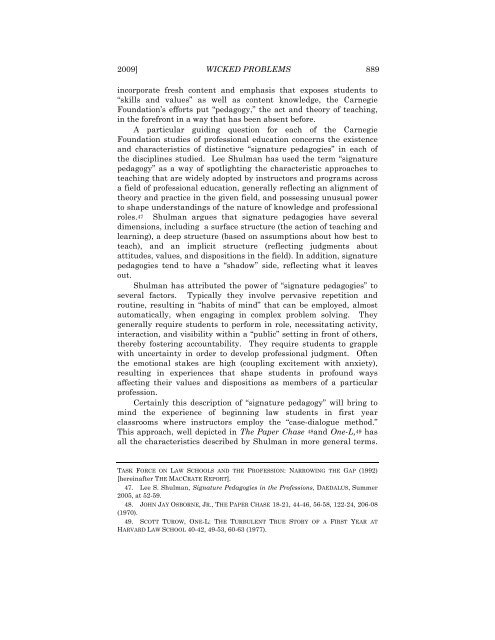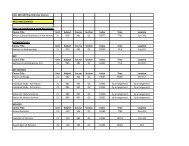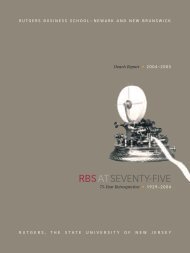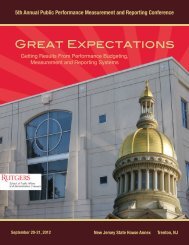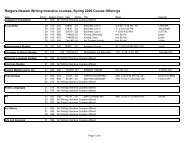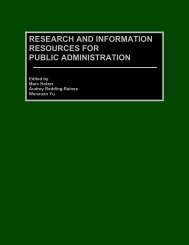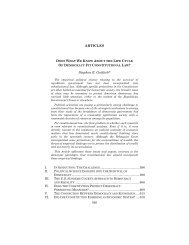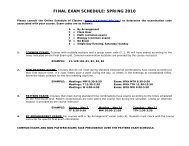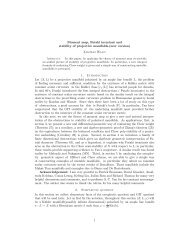Reframing Legal Education's - Rutgers Law Review
Reframing Legal Education's - Rutgers Law Review
Reframing Legal Education's - Rutgers Law Review
Create successful ePaper yourself
Turn your PDF publications into a flip-book with our unique Google optimized e-Paper software.
2009] WICKED PROBLEMS 889incorporate fresh content and emphasis that exposes students to“skills and values” as well as content knowledge, the CarnegieFoundation’s efforts put “pedagogy,” the act and theory of teaching,in the forefront in a way that has been absent before.A particular guiding question for each of the CarnegieFoundation studies of professional education concerns the existenceand characteristics of distinctive “signature pedagogies” in each ofthe disciplines studied. Lee Shulman has used the term “signaturepedagogy” as a way of spotlighting the characteristic approaches toteaching that are widely adopted by instructors and programs acrossa field of professional education, generally reflecting an alignment oftheory and practice in the given field, and possessing unusual powerto shape understandings of the nature of knowledge and professionalroles.47 Shulman argues that signature pedagogies have severaldimensions, including a surface structure (the action of teaching andlearning), a deep structure (based on assumptions about how best toteach), and an implicit structure (reflecting judgments aboutattitudes, values, and dispositions in the field). In addition, signaturepedagogies tend to have a “shadow” side, reflecting what it leavesout.Shulman has attributed the power of “signature pedagogies” toseveral factors. Typically they involve pervasive repetition androutine, resulting in “habits of mind” that can be employed, almostautomatically, when engaging in complex problem solving. Theygenerally require students to perform in role, necessitating activity,interaction, and visibility within a “public” setting in front of others,thereby fostering accountability. They require students to grapplewith uncertainty in order to develop professional judgment. Oftenthe emotional stakes are high (coupling excitement with anxiety),resulting in experiences that shape students in profound waysaffecting their values and dispositions as members of a particularprofession.Certainly this description of “signature pedagogy” will bring tomind the experience of beginning law students in first yearclassrooms where instructors employ the “case-dialogue method.”This approach, well depicted in The Paper Chase 48and One-L,49 hasall the characteristics described by Shulman in more general terms.TASK FORCE ON LAW SCHOOLS AND THE PROFESSION: NARROWING THE GAP (1992)[hereinafter THE MACCRATE REPORT].47. Lee S. Shulman, Signature Pedagogies in the Professions, DAEDALUS, Summer2005, at 52-59.48. JOHN JAY OSBORNE, JR., THE PAPER CHASE 18-21, 44-46, 56-58, 122-24, 206-08(1970).49. SCOTT TUROW, ONE-L: THE TURBULENT TRUE STORY OF A FIRST YEAR ATHARVARD LAW SCHOOL 40-42, 49-53, 60-63 (1977).


